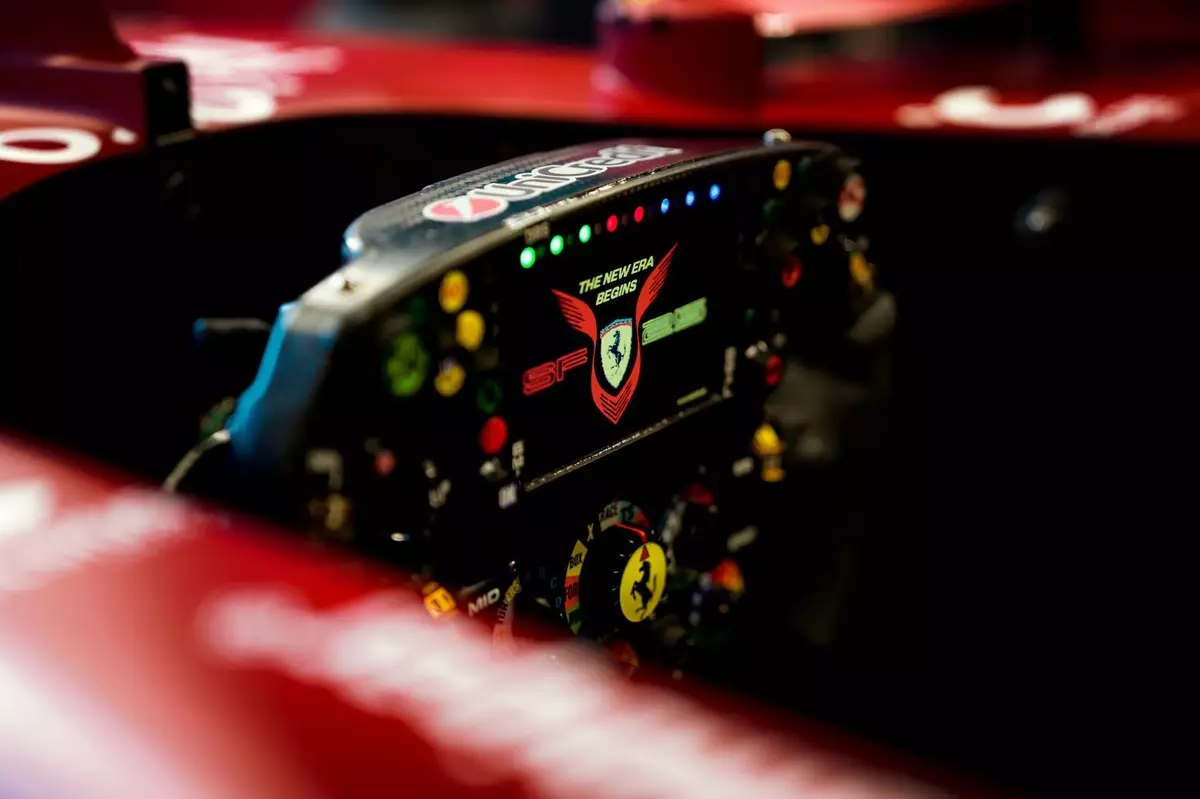Navigating the intricacies of Formula 1 requires not just exceptional driving skill but an ability to adapt rapidly to new environments. Lewis Hamilton’s transition to Ferrari, a team with a rich history yet a penchant for inconsistency, appears to be off to a promising start. His recent achievements, including a breakthrough sprint pole and victory in Shanghai, are testament to his ability to thrive under pressure. Despite the hurdles faced during the Australian and Chinese races, the initial results hint at a potent combination of Hamilton’s skill and Ferrari’s engineering prowess.
The reality of switching teams—especially after over a decade of excellence with Mercedes—contains layers of complexity. Each team has its own philosophy regarding car design and race strategy, meaning Hamilton is not just driving a different car; he is essentially learning a new language. With so many variables in play during racing, anything that can tilt the balance in favor of performance becomes crucial.
From Silver Arrows to Red Scuderia
Hamilton’s struggle to adapt to the fundamentally different design of the SF-25 underscores how driving a Formula 1 car isn’t a mere matter of footwork and steering. For over twelve years, Hamilton cultivated a specific driving style within the confines of the Mercedes model. The subtle distinctions in vehicle feedback and handling create an intense pressure to recalibrate his approach quickly. The Italian team is clearly cognizant of this transition, pulling inspiration from Hamilton’s extensive experience at Mercedes to tailor the car to his expectations.
Ferrari has not only acknowledged Hamilton’s proficiency; it has actively engineered custom solutions to streamline his adaptation process. The modified steering wheel emblematic of this effort goes beyond mere aesthetic changes. The personalized welcome message might draw smiles, but the deeper integrations, such as bespoke clutch and gear levers designed for better ergonomics, contribute to a more seamless experience on the track. Ergonomics in racing can lead to faster reaction times, and in a sport where milliseconds count, such adjustments can be what stands between victory and defeat.
A Steady Stream of Information
A significant aspect of F1 racing is the management of data while driving. In Hamilton’s case, this is crucial not just for navigation around the track but to maximize performance based on real-time situational awareness. Unlike his teammate Charles Leclerc, Hamilton’s steering wheel setup includes additional telemetry and parameters. This mirrors the data-rich environment he had become accustomed to at Mercedes, highlighting Ferrari’s willingness to adapt its technology to provide Hamilton with the data he needs.
The integration of new data displays signifies a departure from standardized practices. While Ferrari typically equips its drivers with a more streamlined set of information, Hamilton’s requests for extensive insights illustrate his preference for a high degree of control and awareness. The state of charge (SOC) of the battery and distinct engine mappings (ENG) presented on his steering wheel allow Hamilton not only to track his performance closely but also to leverage his racing strategy dynamically.
Differing Philosophies: A Competitive Edge
The contrasts between Mercedes and Ferrari extend beyond hardware and design. Mercedes traditionally consolidates multiple functions into streamlined controls, simplifying the driver’s interface. The ‘STRAT’ knob at the bottom of their steering wheel encapsulated much of this philosophy, minimizing distraction. Compare this to Ferrari, which opts for a more segmented approach where functions are dispersed across a variety of settings. Hamilton’s adaptation to this multifaceted approach reflects a deeper interplay between driver preference and engineering.
Ferrari’s decision to implement a quick selector mechanism for varying race modes demonstrates foresight. Modes like ‘RACE’ and ‘FOR’ clearly delineate functions, ensuring drivers can adapt their strategies fluidly during races. Such refinements give Hamilton added confidence, keeping him engaged without overwhelming him with superfluous data. Being able to pivot effortlessly during a race could very well amplify his competitive edge.
Unpacking the Relationship of Comfort and Performance
Changes designed specifically for Hamilton might not be groundbreaking at an individual level, yet when combined, they can foster a significant competitive advantage. If these adjustments help increase Hamilton’s comfort and speed up his acclimatization process to the unique characteristics of the SF-25, they have succeeded on multiple levels. The measure of Ferrari’s success lies not merely in raw speed but in its ability to harmonize the driver, car, and team into a cohesive unit capable of winning titles.
Ultimately, this early phase signals more than adaptation; it indicates a collaborative spirit between driver and team. As Hamilton experiences a responsive environment tailored to his needs, the prospect of unlocking the SF-25’s full potential grows increasingly tangible. With both Hamilton and Ferrari seeking to combine their distinct strengths, the forthcoming races could very well solidify their resurgence in the F1 standings.

